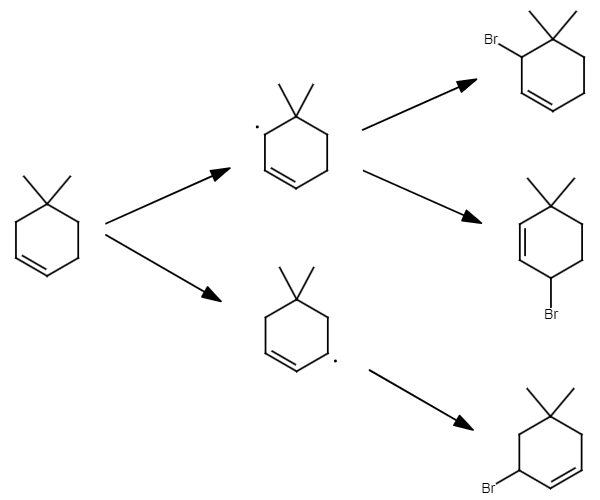[OP] I can't figure out the reason for the change in position of the double bond in the products.
This problem is a worked example in McMurry.
The first step is abstraction of a hydrogen atom (radical), leading to an allylic radical. These show resonance:

As a consequence, a bromine atom (radical) can form a bond in two positions for the top, and in two position for the bottom resonance structure (for the bottom, there is symmetry, so you end up with the same molecule). All of the products are chiral, so products come in pairs of enantiomers, in a 50:50 ratio because everything else is achiral.
[OP] Which one among these three products (disregarding stereochemistry) is the major product?
For other product mixtures, where the degree of substitution at the double bond differs between possible products, the one with the highest degree of substitution is favored (see e.g. this video). Here, there is no such difference. There might be a slight preference for abstracting the hydrogen further from the dimethyl group. There might also be a preference for not having the bromine end up right next to the dimethyl group (as in 3-bromo-4,4-dimethylcyclohexane).
In the absence of any of these preferences, the product formed from the symmetric allylic radical (3-bromo-5,5-dimethylcyclohexane) would be favored 2:1:1, just because of the statistics.





